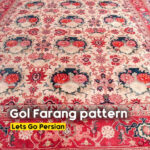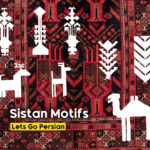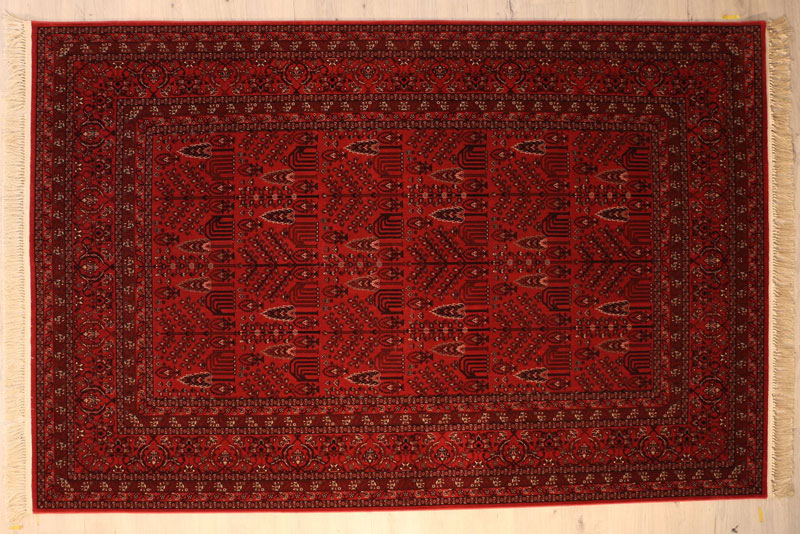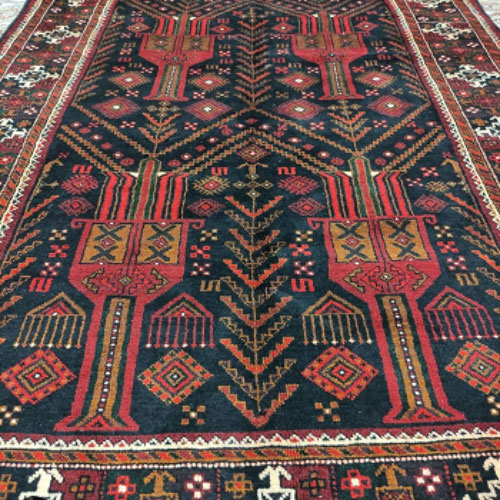
Meeting with Gol Farang pattern in Iranian carpet

Sistan carpet motifs
The Art of Sistan Carpets: Patterns That Tell Stories
From the patterns of the Sistan carpet, what do you know? In this report, we tell you about the common patterns and designs in the Sistan region.

The role of Fatah-o lahi
The role of Fethullahi should be considered one of the most beautiful designs in the Sistan region. This design is regarded as one of the most original carpets of Sistan. In the background, most of them cover the whole text of the rug with Integrated Toranj, a Rhonasian red.
Usually, the motifs and borders are done with white color, and motifs are avoided to fill the background. Along the longitudinal axis, some pots are designed in the same way. Curved lines are used inside the Toranj, reminiscent of local plants.
The white flower can be seen in the center of Torang (bergamot). In most of the designs, the white flower is the floral design, which, according to the old beliefs, the primary origin of this carpet is in Tepe Dez, Pusht Ab village, Fethullah village and other neighboring villages.
One of the essential features of the Fethullahi rug is that the Lachak and Tonraj design is one of the most critical and comprehensive designs in Iranian carpets.
In one of the examples of the Fethullahi pattern, the fringe of this carpet is geometrically broken and has a (+) design. Depending on the weaver’s living environment, it is woven differently. In that, plant images, including vases and trees and geometric motifs such as poti, triangles, squares and other motifs are used to fill the space. In some of these rugs, a large fringe is designed to cover the width of the carpet and its color is decorated in dark brown and black.

Chiti flower design
This rug has two motifs in the text, which consist of a large octagonal shape with a hexagonal motif in the middle, composed of four parts and is mutually opposite and symmetrical. The dominant color on this carpet is red.
Janamazi plan
In this design, according to the beliefs of Muslims, abstaining from drawing plant motifs is used. The margin uses geometric patterns with simple colors and without variation.
Toranj or frame design
In such designs, it is repeated in the number of one, three, or five in the form of fringes or rhombuses. The text is dark in most of these carpets, and the border follows the background color. Periodization of patterns is also done with black paint.
Gol-Panjeh design
This design is reminiscent of a hand with five fingers, repeated in the text, or a small vase with five flower branches, usually repeated in rows next to each other. In some carpets, they are repeated like the design of Zal al-Satani. It is repeated five times in width and 20 to 25 times in length, and the whole field is filled with this motif.
This design is woven on a red background and patterns with brown, Beige, red and white colors or a red experience with white and red marks. The text of this carpet is the same, and they differ only in the margins. But, according to the research, everyone introduced this design as a Gol-Panjeh, and no one considers it a part of flowerpot designs.

Ghandani design or Ghandani flower
It is repeated horizontally or across the width of the carpet in rows three and four. Its background color is usually dark brown, and its motifs are made with shades of black and white.
The people of the region weave this carpet in different places with changes in the color of the background and pattern. Most of the Sistan carpets are incorporated in the sizes of the carpet. Gol Kandani is a rug measuring 150 x 350 or 150 x 300 square centimeters.
Another example of this map is the design of a large vase with a base, similar to sugarcane, inside which circle or rhombus shapes are filled in different colors, the number of which decreases from bottom to top.
These sugar flowers are woven using colors such as red, yellow, brown, green, orange, camel and white, usually repeated three times in width and four times in length. Among these flowers, hanging lamp patterns are used, which are woven using the same colors as flower flowers, and motifs such as primary and carnations, etc., are also used to fill the carpet background. It mainly works on a dark background, such as dark red or black.
Vase design
The central and recurring motif of the potted rug in Sistan. This plan is considered to belong to the time of Shah Abbas. In this design, the vase motif is located in various forms in different carpets at the bottom and middle of the carpet text, and tiny square flowers with very little foliage come out of it, which cover the text.

(Vase design)
In another version, the design is not just one vase but several vases, the text with flowers and branches connecting them. In each map, the vases are either small or large, and between them, there are small and large decorative motifs such as chitak, chains, and hanging lamps; the vase is a symbol related to the fertility ritual. From the third millennium BC until now, it has been embodied in countless forms.
According to the symbolic associations of the vase, it is usually shown standing on the crescent-shaped bases of the moon, and plants are placed in it, which is a sign of abundance or one of the cosmic trees. Usually, Sistan vase designs are geometrically designed.
The vase is square, and the leaves with different colors attached to the stem rise parallel to the vases. The primary color of the background of this carpet is black or brown, and the color of the patterns consists of different reds with maroon and dark green. In other parts of Sistan, this carpet is woven with changes in the border and various types of pots.



















